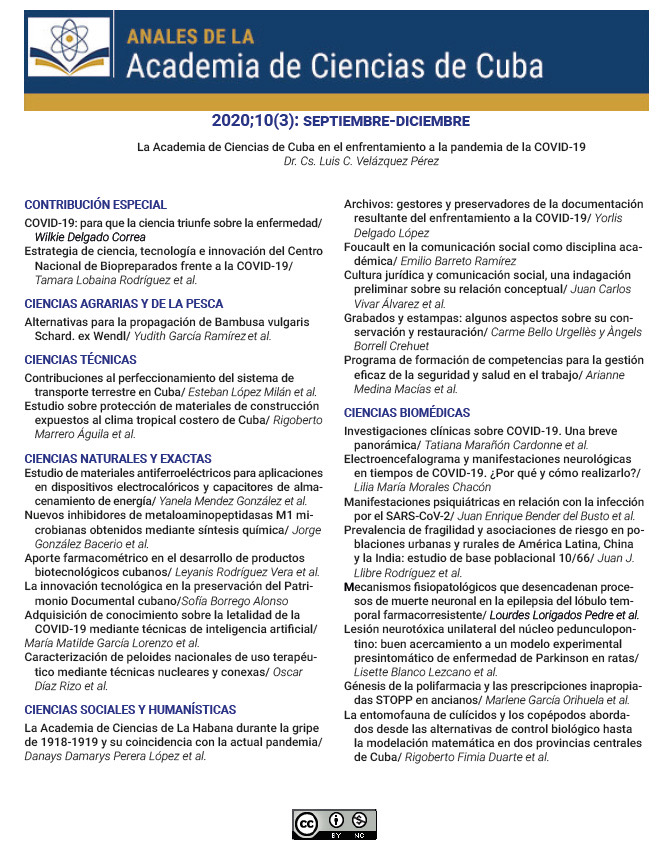Pathophysiological mechanisms that trigger neuronal death in drug-resistant temporal lobe epilepsy
Keywords:
drug-resistant temporal lobe epilepsy, pathophysiological mechanisms, inflammation, oxidative stress, neuronal deathAbstract
Introduction. In relation to drug-resistant temporal lobe epilepsy (DRTLE), the interrelation between inflammation, oxidative stress, and neuronal death constitutes a topic increasingly researched into. Objectives: To expand the knowledge of the molecular mechanisms that participate in the pathophysiology of DRTLE by correlating clinical variables with immunological ones, oxidative stress and neuronal death.Methods. Immunocytochemistry techniques were used to measure the markers CD3, CD4, CD8, CD19, CD25, HLA-DR; Nephelometry was used for IgG, IgM, IgA, and Albumin; immunoenzymatic tests for IL-1β, IL-6, TNF-α, and nitric oxide. By means of western blot: NFκB, JNK, 4-hydroxy-2-nonenal, 3-nitrotyrosine; by means of spectrophotometry: malonildialdehyde, advanced glycation products, advanced protein oxidation products, uric acid, superoxide dismutase, glutathione, and vitamin C; by means of immunohistochemistry: Annexin V, TUNEL, synaptophysin, caspase 3, p53, and bcl-2; by means of HPLC: glutamate and by means of autorradiography: 5-HT, 5-HT1A, 5-HT7.
Results. It is shown that seizures are the pathogenic substrate of immunological, inflammatory and oxidative stress disorders in DRTLE. The clinical variables are related to the molecular and protein studies conducted and all together show the neuronal death in the DRTLE.
Downloads
Published
How to Cite
Issue
Section
License
The journal Anales de la Academia de Ciencias de Cuba protects copyright, and operates with a Creative Commons License 4.0 (Creative Commons Attribution-NonCommercial License 4.0). By publishing in it, authors allow themselves to copy, reproduce, distribute, publicly communicate their work and generate derivative works, as long as the original author is cited and acknowledged. They do not allow, however, the use of the original work for commercial or lucrative purposes.
The authors authorize the publication of their writings, retaining the authorship rights, and assigning and transferring to the magazine all the rights protected by the intellectual property laws that govern in Cuba, which imply editing to disseminate the work.
Authors may establish additional agreements for the non-exclusive distribution of the version of the work published in the journal (for example, placing it in an institutional repository or publishing it in a book), with recognition of having been first published in this journal.
To learn more, see https://creativecommons.org






